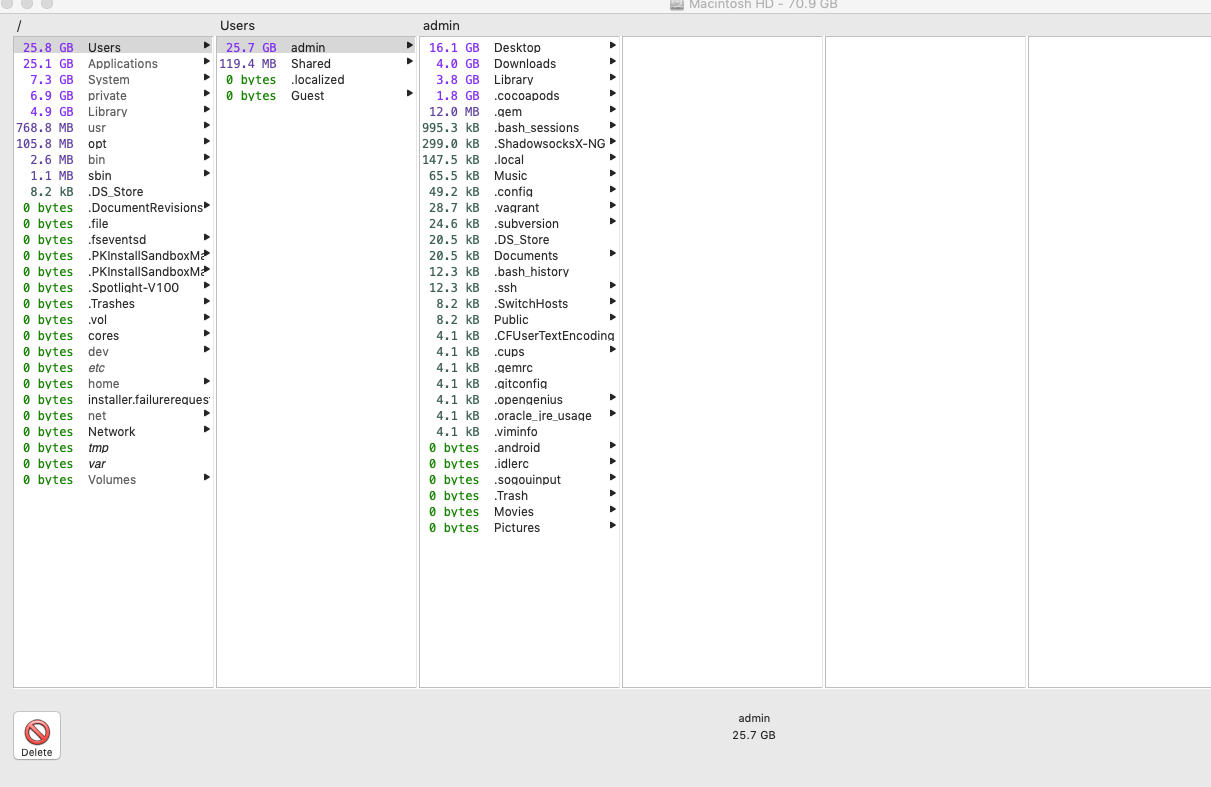
- #Omnidisksweeper colors full
- #Omnidisksweeper colors password
- #Omnidisksweeper colors free
- #Omnidisksweeper colors mac
It provides an interactive UI that’s as functional as it is beautiful and you can preview and delete files directly within the app.
#Omnidisksweeper colors mac
While using Finder and About This Mac are helpful, my favorite approach to tidying things up is with the visual drive analyzer Daisy Disk ($9.99).
#Omnidisksweeper colors free

When run as root, the application can access and size this and other locations on the drive. Compare the Spotlight Database size to the previous screenshot. OmniDiskSweeper run as root using Terminal. Spotlight-V100 folder now shows over 800MB of content where before it appeared empty.
#Omnidisksweeper colors password
Once an administrative password is entered, the application will launch and allow you to scan the drive for all files. Assuming you have OmniDiskSweeper installed in your main Applications folder, that command is: sudo /Applications/OmniDiskSweeper.app/Contents/MacOS/OmniDiskSweeper

As with all sudo commands, triple-check the syntax before executing it (or simply copy/paste from here) as it is possible to cause irreversible damage to the OS and file system if the wrong command is entered.
#Omnidisksweeper colors full
To give OmniDiskSweeper full access to all files on your drive, you must run the application from the Terminal using the sudo command, which stands for “Super User Do” and gives access to all files on a user’s drive.

Since few people ever run as a fully priviledged “root” user, this means you’re almost always going to miss something, including system-level files or files and folders belonging to other user accounts on that Mac.

When run normally, as above, Joe noted that OmniDiskSweeper only shows files that are visible to the user that ran it. Note also the size of the Spotlight Database as 0 bytes. It shows that the user’s Documents folder is the largest folder on the drive. OmniDiskSweeper run from the Applications folder. Thankfully he also found a solution which he shared with us and we now share with you. This allows a user to easily find the largest files on a drive and is great for clearing up free space (such as when preparing to migrate to a smaller solid state drive). However, in Mac Geek Gab 355, listener Joe found that it doesn’t always show everything. OmniDiskSweeper scans the files and folders of your Mac’s hard drive and displays a list, in order of file size, of the contents of your drive. Long time Mac Geek Gab listeners know that using OmniDiskSweeper is a fantastic (free!) way to find out what files are taking up all your precious hard drive or SSD space.


 0 kommentar(er)
0 kommentar(er)
